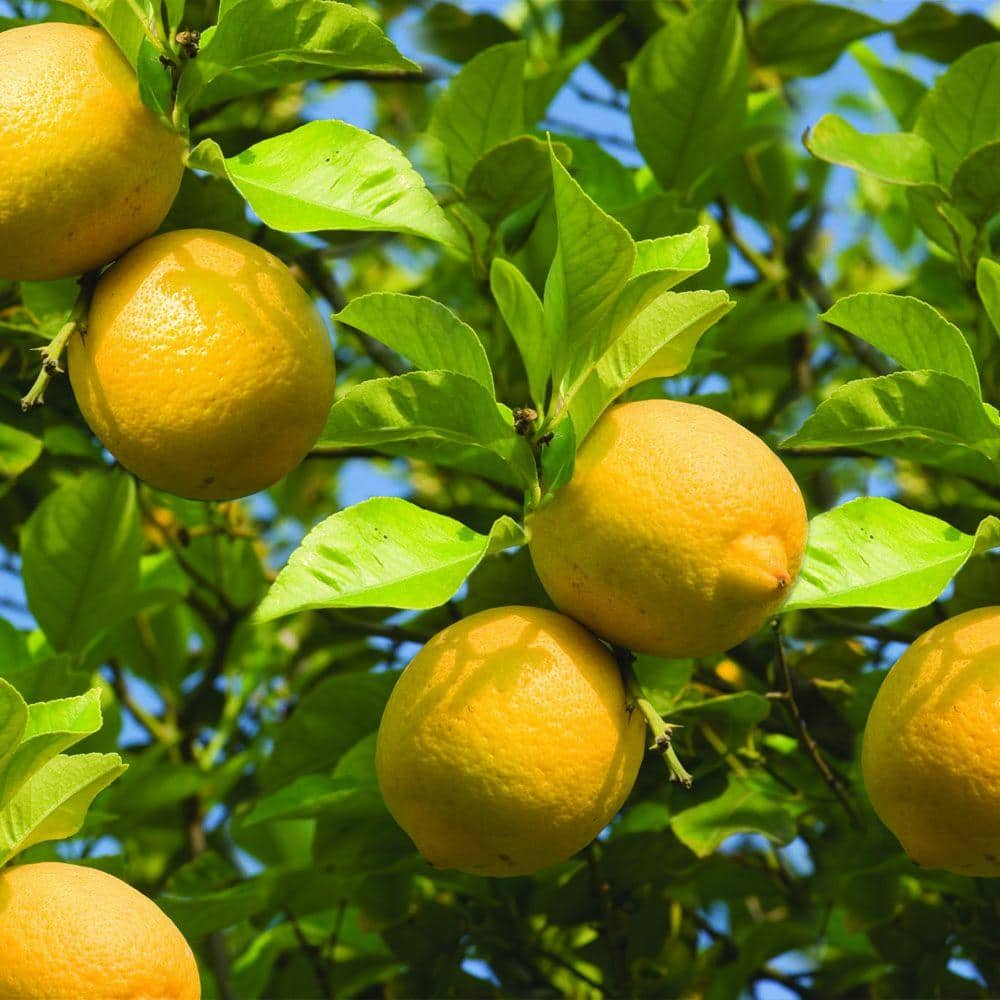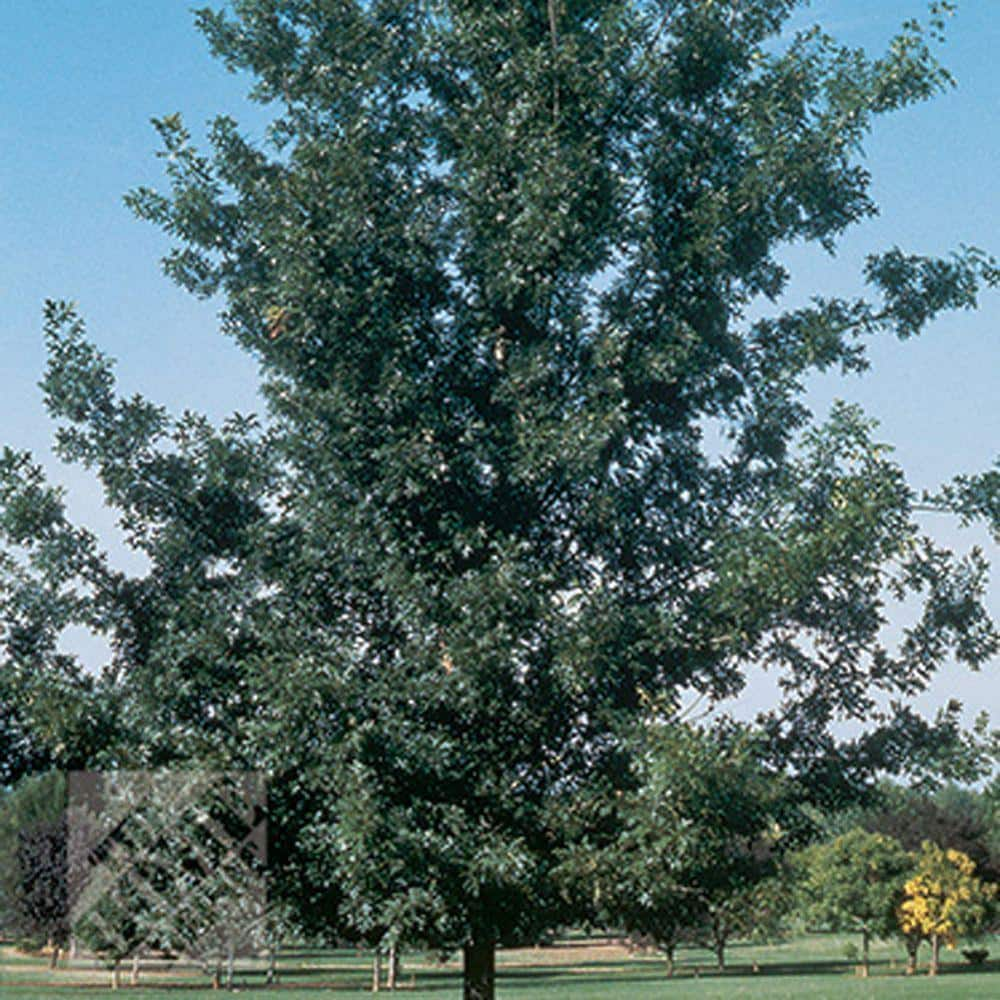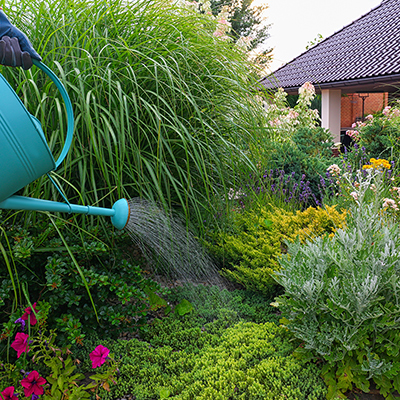Best Shade Trees for Your Yard

Last updated February 2, 2024
Shade trees in your landscape are unmatched in their effectiveness to provide relief from intense summer sun. Smart gardeners know that you can plant shade trees to direct summer breezes in your landscape. Additionally, well-placed shade trees add value to your property, reduce soil erosion and help manage stormwater runoff.
Shade trees increase wildlife habitats, too, by offering food and shelter for birds, squirrels and insects like butterflies.
When choosing shade trees, most urban and suburban homeowners are looking for fast-growing trees and a small-to-medium mature size. If you have a larger property, you have options like oaks that grow 60 to 100 feet tall.
In this guide, learn about shade trees for your landscape.
Table of Contents
Deciduous vs. Evergreen
Checklist for Choosing Shade Trees
Maple
Oak
Poplar
Aspen
Deciduous vs. Evergreen

When selecting shade trees, first decide if you want an evergreen tree or a deciduous tree. Evergreens keep their leaves year-round, while deciduous trees drop leaves in autumn and bud out again in the spring. Evergreen needles do drop eventually, but keep their shape for long periods of time.
Although it isn't a hard and fast rule, most deciduous trees have foliage on the crown or top of the trunk. Evergreen trees have more width across the bottom with a slender crown.
A deciduous tree is best if your goal is having shade in warmer months and decreasing cooling costs without blocking the sun in winter. Evergreen trees do provide some shade, but not when the sun is high in the sky. Evergreens work well in blocking high winds and supporting your heating in winter. If you live in an area with high winds, evergreens would be your best choice.
If you want privacy or year-round interest, opt for an evergreen such as Emerald Green arborvitae or Alberta spruce.
Checklist for Choosing Shade Trees

Now that you know the differences between a deciduous and evergreen, there's still more important things to consider when choosing a tree for your yard. The pointers below will help:
- Choose a medium-to-slow grower, as some fast-growing shade trees can be weak and short-lived. Medium growers will grow about 1 1/2 to 2 feet a year.
- Purchase the largest size you can afford. Small trees take years to grow tall enough to provide adequate shade.
- Plant shade trees on the west or southwest side of your house to maximize shade from strong afternoon summer sun.
- Avoid planting too close to your house, as shade trees have large roots that can damage your home’s foundation. Plant trees that grow 30 feet tall a minimum of 15 feet from your house’s foundation and away from utility lines. Those that grow 30 to 70 feet tall should be planted at least 20 feet from the foundation and lines. Trees growing 70 feet and taller should be planted at least 30 feet from the foundation and lines. Consult plant tags for information specific to your tree; some fast-growing trees have large root zones that can damage underground structures like sewer pipes.
- Choose trees that will grow in your hardiness zone. All trees in the Garden Center at your local The Home Depot store will thrive in your local climate.
- Know your site, considering all utility lines and proximity to structures like houses.
- Check plant tags for info on whether the tree is fast or slow growing and how tall it is when mature.
- Best time of year to plant trees is in fall. Late winter and early spring are ok, too. You can plant trees in warmer months, but be prepared to water in times of extreme heat.
Maple

Maple trees grow throughout the country. They are well-known for the syrup made from the sap of the sugar maple and their stunning autumn leaves. The trees range in height from small Japanese maples at 8 feet to bigleaf specimens nearing 100 feet tall when mature.
In your home landscape, you can grow maples in hardiness zones 5 to 9. Some varieties are hardy to zone 3. In the Garden Center, look for 'October Glory' and 'Autumn Blaze' for stunning fall color and abundant shade. If you're not a fan of maples' "helicoptor seeds" that spin in the wind and can be messy to clean up, look for seedless cultivars like 'Celebration' and 'Autumn Fantasy' and others.
On a smaller scale, you can plant Japanese maples near a patio to shade a courtyard garden. Japanese maples grow well in containers, too.
Oak

Oak trees are both beautiful and tough. After all, furniture made from its dense wood is prized for durability and quality. In landscapes, oak trees provide many years of good looks and plenty of shade when mature.
Oaks are deciduous, meaning they drop their leaves, but they are persistent. After the leaves turn in fall, they will stay on the tree through winter and drop when new leaves emerge in spring.
Oak trees support wildlife. Squirrels and deer eat acorns, and birds, butterflies and more depend on oak trees for their habitat.
Oaks grow throughout the country. In the Garden Center, look for varieties like White Oaks, Red Oaks, Willow Oaks and Live Oaks. Pay attention to the mature size and plant away from your home. You want to give these special trees room to grow for decades to come.
Poplar

Poplar trees are hardwood trees known for fast growth. Aspens and cottonwoods are types of poplar trees (see below for more about aspens).
The most popular poplar, tulip poplar, isn't a true poplar. Instead, it's a type of magnolia. Tulip poplar grows 80 to 100 feet tall. It's an attractive, upright tree, with bright gold fall foliage and tulip-shaped blooms in spring.
Tulip poplar is hardy in zones 5 to 9.
Aspen

The Aspen is a medium sized deciduous tree that produces small flowers that are 1 to 2 inches long. Along with cottonwoods, it is a type of poplar.
Aspens are native to Colorado and Utah and grow primarily in the western U.S. Aspen flowers are produced in early spring before their leaves grow. Some Aspen species are known for a sweet and strong fragrance in springtime. At full maturity, they grow 40 to 50 feet tall, and their hardiness zone is 2 to 6.
Birch

Birch is a deciduous tree that produces tiny flowers in early spring. There are over 60 species of birch trees and they are known to have a wintergreen scent. They grow in the Northeastern U.S. in hardiness zones 2 to 6. When fully mature, a birch tree can reach 30 to 40 feet tall.
Chaste Tree (Vitex)

The chaste tree is a deciduous tree or large shrub that produces fragrant pink, lavender or white flowers in summer, arranged in up to 12-inch panicles. Depending on the variety, chaste trees can grow 10 to 15 feet tall and are hardy in zones 6 to 9.
Vitex is a small tree, but can offer shade for a patio or courtyard garden.
Linden

A linden tree is deciduous with heart-shaped leaves and clusters of white flowers that bloom in spring or summer. Its fragrant flowers are rich in nectar and are highly attractive to bees. At full maturity, the linden grows to a height of 50 to 60 feet and is hardy in zones 3 to 8.
Pine Tree

Pine trees are evergreen, meaning there are needles on the tree throughout the year. What makes pine trees unique is they produce needles that can range from 1 to 11 inches in length. Pine trees are fragrant, hardy in zones 1 to 8, and can grow up to 80 feet high depending on the variety.
A single pine tree is usually not a great shade tree, but a mass planting of pine trees is a quick way to create shade in your landscape.
More Shade Tree Selections

Shade trees are both functional and ornamental. To choose the best tree for your yard, look for varieties that thrive in your climate and are suited to your site. You want a tree that will offer shade for generations.
More shade trees options:
Best Trees for Treehouses

Most people can remember climbing trees in their backyards as children. Some people even built treehouses in the backyard that provided hours of fun and enjoyment. There are certain trees that are best for building them. Firstly, the tree has to have a large and sturdy trunk with thick branches for climbing. Maple, hickory, oak, beech and tulip poplar trees are all deciduous and have hard wood with thick trunks that are ideal for building treehouses.
Shade trees cool your landscape in the hotter months and provide the privacy you need. Head to your local store or use The Home Depot Mobile App to see our selection of shade trees.































